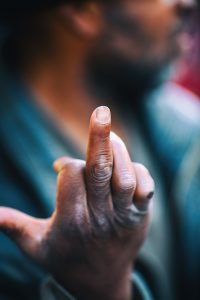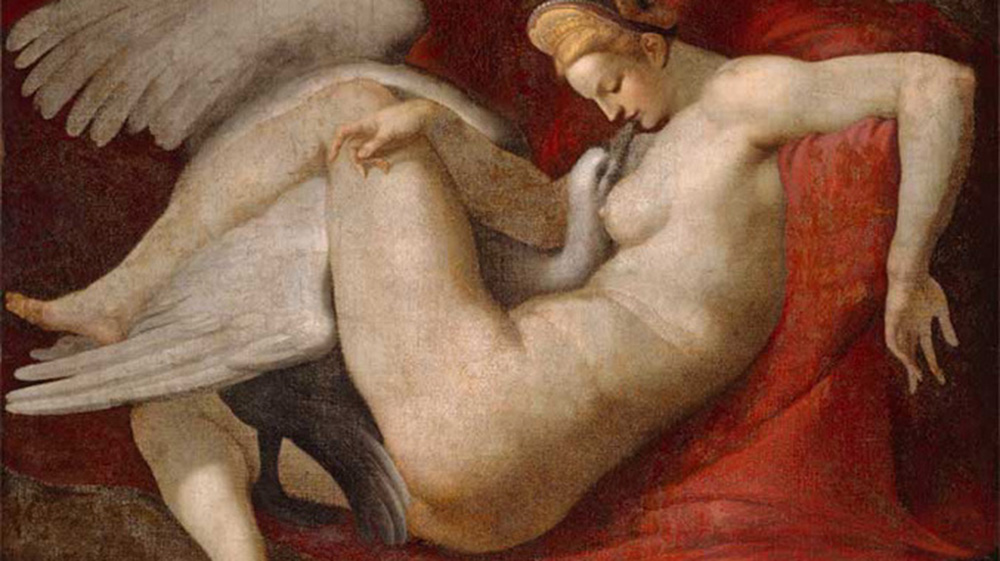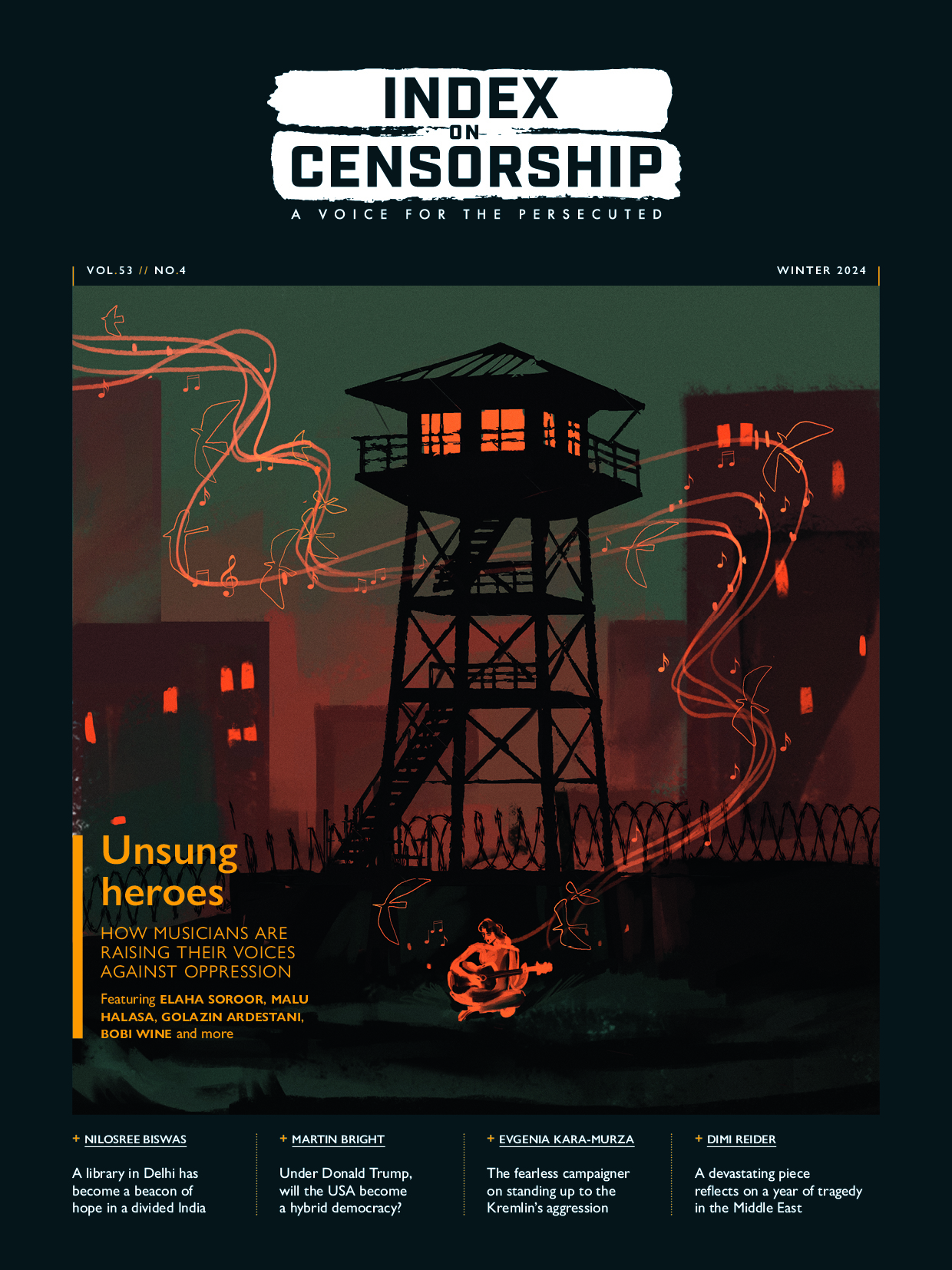[vc_row][vc_column][vc_column_text css=”.vc_custom_1579268532812{margin-bottom: 30px !important;background-color: #f5f5f5 !important;}”]Please note: This is part of a series of guides produced by Index on Censorship on the laws related to freedom of expression in England and Wales. They are intended to help understand the protections that exist for free speech and where the law currently permits restrictions.[/vc_column_text][vc_column_text]This guide is available to download as a PDF here.[/vc_column_text][vc_single_image image=”112007″ img_size=”large” add_caption=”yes” alignment=”center”][vc_raw_html]JTNDZGl2JTIwc3R5bGUlM0QlMjJmb250LXNpemUlM0EuOWVtJTNCcGFkZGluZyUzQTVweCUzQmJhY2tncm91bmQtY29sb3IlM0FXaGl0ZVNtb2tlJTNCZmxvYXQlM0FyaWdodCUzQm1hcmdpbi1sZWZ0JTNBMTVweCUzQndpZHRoJTNBNDAlMjUlM0IlMjIlM0UlM0NoNCUzRVRhYmxlJTIwb2YlMjBjb250ZW50cyUzQyUyRmg0JTNFJTBBJTNDb2wlM0UlMEElM0NsaSUzRSUzQ2ElMjBocmVmJTNEJTIyJTIzdG9wJTIyJTNFT2JzY2VuZSUyMHB1YmxpY2F0aW9ucyUyMG9mZmVuY2VzJTIwZXhwbGFpbmVkJTNDJTJGYSUzRSUzQyUyRmxpJTNFJTBBJTNDbGklM0UlM0NhJTIwaHJlZiUzRCUyMiUyM29wMiUyMiUzRU92ZXJ2aWV3JTIwb2YlMjBVSyUyMGxhd3MlM0MlMkZhJTNFJTNDJTJGbGklM0UlMEElM0NsaSUzRSUzQ2ElMjBocmVmJTNEJTIyJTIzb3AzJTIyJTNFVGhlJTIwT2JzY2VuZSUyMFB1YmxpY2F0aW9ucyUyMEFjdCUyMDE5NTklM0MlMkZhJTNFJTNDJTJGbGklM0UlMEElM0NsaSUzRSUzQ2ElMjBocmVmJTNEJTIyJTIzb3A0JTIyJTNFVGhlYXRyZXMlMjBBY3QlMjAxOTY4JTNDJTJGYSUzRSUzQyUyRmxpJTNFJTBBJTNDbGklM0UlM0NhJTIwaHJlZiUzRCUyMiUyM29wNSUyMiUzRUluZGVjZW50JTIwRGlzcGxheXMlMjAlMjhDb250cm9sJTI5JTIwQWN0JTIwMTk4MSUzQyUyRmElM0UlM0MlMkZsaSUzRSUwQSUzQ2xpJTNFJTNDYSUyMGhyZWYlM0QlMjIlMjNvcDYlMjIlM0VDcmltaW5hbCUyMEp1c3RpY2UlMjBhbmQlMjBJbW1pZ3JhdGlvbiUyMEFjdCUyMDIwMDglM0MlMkZhJTNFJTNDJTJGbGklM0UlMEElM0NsaSUzRSUzQ2ElMjBocmVmJTNEJTIyJTIzb3A3JTIyJTNFV2hlcmUlMjBjYW4lMjBJJTIwZmluZCUyMG91dCUyMG1vcmUlMjBpbmZvcm1hdGlvbiUyMGFib3V0JTIwb2JzY2VuaXR5JTIwbGF3JTNGJTNDJTJGYSUzRSUzQyUyRmxpJTNFJTBBJTNDJTJGb2wlM0UlM0MlMkZkaXYlM0U=[/vc_raw_html][vc_custom_heading text=”1. Obscene publications offences explained” font_container=”tag:h1|text_align:left” use_theme_fonts=”yes” el_id=”ct1″][vc_column_text]It is nearly 300 years since bookseller Edmund Curll was convicted in 1727 on a charge of obscenity in an English court for his publication of the mildly pornographic Venus in the Cloister or The Nun in Her Smock. Obscenity was thereafter recognised as a crime under common law. Since then, the definition of obscenity has narrowed from the broad concept under common law of engendering “revulsion, disgust or outrage” (although this remains the definition of obscenity for the offence of outraging public decency) to the notoriously vague current definition under the Obscene Publications Act 1959 of “tending to deprave and corrupt”.
Obscenity law is concerned with protecting “public morals” – it seeks to steer people away from immoral or criminal behaviour and vice. The European Court of Human Rights (ECtHR) has recognised that convictions under the Obscene Publications Act 1959 – which criminalises publishing “obscene” material – interfere with individuals’ rights to free expression under Article 10 of the European Convention on Human Rights (ECHR). However, in the 1972 case of Richard Handyside v United Kingdom, the ECtHR acknowledged that prosecutions under the act were permissible under the restrictions set out in Article 10(2) of the ECHR where freedom of expression can be restricted to protect “morals in a democratic society.”[/vc_column_text][vc_column_text]
What does Article 10(2) of the European Convention on Human Rights say?
Article 10(2) says that the right to freedom of expression “carries with it duties and responsibilities”. Because of this, the right to free expression may be subject to restrictions and conditions that are necessary in a democratic society and are set out clearly in the law. To be valid, any restrictions must be for one or more of the following purposes: national security, public safety, territorial integrity, preventing crime or disorder, protecting health or morals, protecting the reputation or rights of others, preventing the disclosure of information received in confidence, and for maintaining the authority and impartiality of the judiciary.[/vc_column_text][vc_column_text css=”.vc_custom_1579616809073{margin-top: 15px !important;margin-bottom: 15px !important;padding-top: 5px !important;padding-right: 10px !important;padding-bottom: 10px !important;padding-left: 10px !important;background-color: #44573b !important;}”]
Case study: Richard Handyside and The Little Red Schoolbook
The Richard Handyside case was about The Little Red Schoolbook. This was a book intended for teenagers written by two Danish authors and intended to be published in the UK by Handyside, the owner of publishing house Stage 1. It had chapters on education, learning, teachers, pupils and “the system”. However, it also had a section on sex, which contained sub-sections on masturbation, orgasm, intercourse and petting, contraceptives, wet dreams, menstruation, child molesters or “dirty old men”, pornography, homosexuality and impotence. There were also references to smoking pot and references to porn as “a harmless pleasure”. In March 1971, the Daily Mirror, The Sunday Times and The Daily Telegraph published accounts of the book’s contents, leading to a number of complaints to the Director of Public Prosecutions, who asked the police to investigate. Following a criminal trial, Handyside was convicted of possessing 1,208 obscene books for publication for gain. He was fined and the books were ordered to be destroyed.
The question the ECtHR had to consider was whether Handyside’s criminal conviction (plus the fine and the destruction of the books) amounted to a breach of his Article 10 rights to freedom of expression. The court decided that, since there was no “uniform European conception of morals”, the authorities in the UK were better placed than the European judges to determine the need for acts such as the Obscene Publications Act. It also said the British judges were entitled, in the exercise of their discretion, to think that the Schoolbook “would have pernicious effects on the morals of many of the children and adolescents who would read it”. The court found no breach of Handyside’s Article 10 rights.
However, the case did establish an important precedent because it established the principle that “freedom of expression…is applicable not only to ‘information’ or ‘ideas’ that are favourably received or regarded as inoffensive or as a matter of indifference, but also to those that offend, shock or disturb the state or any sector of the population.”[/vc_column_text][vc_column_text css=”.vc_custom_1579616619475{margin-top: 15px !important;margin-bottom: 15px !important;padding-top: 5px !important;padding-right: 10px !important;padding-bottom: 10px !important;padding-left: 10px !important;background-color: #44573b !important;}”]
Case study: Obscene publications and the internet
The case of R v Perrin (Stephane Laurent) 2002 established that the creation of a web page was sufficient to establish publication and that a jury only had to be satisfied that there was a likelihood of vulnerable persons seeing the obscene material. The prosecution did not have to demonstrate that such a person actually did or would see it. Pornographic content on a web page that has the tendency to deprave and corrupt the viewer would therefore be sufficient to establish criminal liability and the court found the in this instance did not violate the defendant’s right to freedom of expression under Article 10 of the European Convention on Human Rights.
However, subsequent cases have tested this assumption (see Case dropped against Girls Aloud blogger below).[/vc_column_text][vc_column_text]In recent years, there have been multiple and increased calls to abolish the Obscene Publications Act. Because prosecutions under the act require convincing a jury that a video, sound recording or image “tends to deprave or corrupt” those receiving it – a standard judged against prevailing moral standards – there have been many recent high-profile acquittals in cases where jurors have simply been unmoved by the potentially obscene material in front of them.[/vc_column_text][vc_column_text css=”.vc_custom_1579616636337{margin-top: 15px !important;margin-bottom: 15px !important;padding-top: 5px !important;padding-right: 10px !important;padding-bottom: 10px !important;padding-left: 10px !important;background-color: #44573b !important;}”]
Case study: Shocked then bored
In 2012, Michael Peacock was unanimously acquitted by 12 members of a jury at Southwark Crown Court on six counts of publishing obscene articles likely to “deprave and corrupt”. He had sold hardcore gay pornography DVDs online from his flat in Brixton. The police saw adverts and operated an undercover purchase. They found six DVDs featuring hardcore pornography and Peacock was prosecuted. The jury was shown hours of footage from the DVDs. Peacock’s defence solicitor remarked that although the jury “were quite shocked initially, they started to look quite bored very quickly”. The jury returned a not-guilty verdict.[/vc_column_text][vc_column_text css=”.vc_custom_1579616658097{margin-top: 15px !important;margin-bottom: 15px !important;padding-top: 5px !important;padding-right: 10px !important;padding-bottom: 10px !important;padding-left: 10px !important;background-color: #44573b !important;}”]
Case study: Girls Aloud blogger
In 2008, a case was dropped against a blogger charged with obscenity after he wrote an erotic story detailing the kidnap, sexual torture and murder of pop group Girls Aloud. A key part of the prosecution’s case against the blogger was that his post could be easily accessed by young Girls Aloud fans. However, shortly before the trial, an IT expert gave evidence that the blog could be found only by people specifically searching for it. On discovering this, the prosecution dropped the case and the judge issued a not-guilty verdict.[/vc_column_text][vc_column_text]While many of the obscenity laws created in the latter half of the 20th century remain in place, in recent years the risk of prosecution has reduced. Following the Peacock case, the Crown Prosecution Service (CPS) recently changed its guidance to narrow what it considers “obscene”. Consensual legal sexual acts between adults such as spanking, fisting, BDSM and female ejaculation are no longer considered obscene by prosecutors, and so people who distribute or sell videos or images of such acts will likely no longer be prosecuted under the Obscene Publications Act. Equally, the number of prosecutions and convictions secured under obscenity laws in England and Wales has dropped dramatically in recent years. For example, while in 1984 there were 429 successful convictions under the Obscene Publications Act 1959, in 2014 there were just 10.[/vc_column_text][/vc_column][/vc_row][vc_row][vc_column][vc_separator el_width=”80″ el_id=”op2″][/vc_column][/vc_row][vc_row][vc_column][vc_custom_heading text=”2. Overview of UK laws” font_container=”tag:h1|text_align:left” use_theme_fonts=”yes”][vc_column_text]The UK laws applicable to the broad area of obscenity include:
- Obscene Publications Act 1959
- Obscene Publications Act 1964
- Theatres Act 1968
- The common law offence of outraging public decency
- Indecent Displays (Control) Act 1981
- Video Recordings Act 1984
- Protection of Children Act 1978 (please see the Child Protection Guide)
- Criminal Justice Act 1988 (Possession of indecent photograph of a child – please see Child Protection Guide)
- Broadcasting Act 1990
- Postal Services Act 2000
- Criminal Justice and Immigration Act 2008 (covering the definition of “extreme pornography”)
Below we highlight the main offences that might concern freedom of expression and the law.[/vc_column_text][/vc_column][/vc_row][vc_row][vc_column][vc_separator el_width=”80″ el_id=”op3″][/vc_column][/vc_row][vc_row][vc_column][vc_custom_heading text=”3. The Obscene Publications Act 1959″ font_container=”tag:h1|text_align:left” use_theme_fonts=”yes”][vc_column_text]The offence of publishing an obscene article, or possessing one for gain, is set out in the Obscene Publications Act 1959. This act states the legal test for obscenity to be applied to the offence and certain defences to the crime.[/vc_column_text][/vc_column][/vc_row][vc_row][vc_column][vc_custom_heading text=”What is “obscene”?” use_theme_fonts=”yes” el_id=”ct41″][vc_column_text]

Credit: Thomas Hawk (CC BY-NC 2.0)
Section 1(1) of the Obscene Publications Act 1959 describes an “obscene” item as one that has the effect of “tending to deprave and corrupt” persons likely to read, see or hear it. This statutory definition is largely based on the common law test of obscenity, as laid down in the case of R v Hicklin 1868, namely:
“whether the tendency of the matter charged as obscenity is to deprave and corrupt those whose minds are open to such immoral influences, and into whose hands a publication of this sort may fall.”
In cases such as Lady Chatterley’s Lover (R v Penguin Books Ltd 1961) and the prosecution of the publishers of Last Exit to Brooklyn (R v Calder and Boyars Ltd 1969), the courts have defined “deprave” as meaning to make morally bad, debase, pervert or corrupt morally; and “corrupt” as meaning to render morally unsound or rotten, destroy moral purity or chastity, pervert or ruin a good quality, and debase or defile. If the item is “filthy, loathsome or lewd” but does not tend to corrupt and deprave, it will not be obscene for the purposes of the act.
“Obscene” material is not limited to material of a sexual nature. In fact, it has been held by the courts that material glamourising or promoting potentially dangerous behaviour, such as drug-taking or brutal violence, may amount to an obscene publication. See, for example, the ruling in Calder (Publications) Ltd v Powell 1965: “A tendency to deprave or corrupt may be defined as a tendency to make people behave worse, more violently, or be more addicted to drugs than they otherwise would be.” The purpose or intention of the creator of the material, however noble or otherwise, will be immaterial to whether something is deemed to be obscene or to outrage.[/vc_column_text][/vc_column][/vc_row][vc_row][vc_column][vc_custom_heading text=”Offences” use_theme_fonts=”yes”][vc_column_text]The Obscene Publications Act 1959 makes it an offence to “publish” an obscene article (whether for gain or not). “Publish” is defined in Section 1(3) of the act and includes distributing, circulating, selling, hiring, giving, lending, showing and electronically transmitting an obscene article. If the article is an obscene film or sound recording, it is a crime to show, play or project it.
The Obscene Publications Act 1964 added the offence of merely possessing an obscene article, provided it is intended for “publication for gain”. This is intended to catch situations where an item is in a person’s possession but not yet on display or sold or distributed to a customer. For example, Handyside was convicted of possessing obscene books intended for publication for gain.
“Gain” is broadly defined. Section 1(5) of the 1964 act defines it as gain accruing “by way of consideration for the publication or in any other way”. “Consideration” will cover financial advantage. However, “any other way” is not defined further so the exact parameters of this form of offence are unclear. There can be a “publication” under the Obscene Publications Act even if the material is shown to only one person. Private conversations in internet chat rooms or on online messaging services can be publications for the purposes of the act.[/vc_column_text][vc_column_text css=”.vc_custom_1579616691016{margin-top: 15px !important;margin-bottom: 15px !important;padding-top: 5px !important;padding-right: 10px !important;padding-bottom: 10px !important;padding-left: 10px !important;background-color: #44573b !important;}”]
Case study: One-to-one online sexual fantasy chat
In 2012 a convicted paedophile was charged under the Obscene Publications Act for engaging in individual online chats about the physical and sexual abuse of children: the first prosecution of an individual under the Obscene Publications Act 1959 for online one-to-one chats in which the content was fantasy. The question was whether the comments had been “published” if they were sent to only one person. The court said that publication under the act did not need to be to more than one person, and it did not matter that neither participant was wholly innocent to begin with – the act “protects the less innocent from further corruption, the addict from feeding or increasing his addiction” (quoting the case of DPP v Whyte 1972).
The prosecutor in the case stated “there will be many who focus on the fact that these conversations were private and fantasy to highlight how this decision indicates an erosion upon an individual’s freedom of expression”. However, he said the content of the discussions “was not the legal and consensual sexual activity of adults rather it was the sexual and physical abuse of children”, which he said merited the protection of the law. Smith’s lawyer, Myles Jackman, has described this case as a “landmark Court of Appeal decision extending publication under the OPA to private, one-to-one, sexual fantasy text chat via the internet; potentially criminalising millions of adults”.[/vc_column_text][vc_column_text]It is important to note that the Obscene Publications Act 1959 does not criminalise writing or otherwise creating an obscene article. Nor does it criminalise merely possessing an obscene article so long as it is not being held for future gain. It is primarily the distributors of obscene material who are penalised under the statute.[/vc_column_text][/vc_column][/vc_row][vc_row][vc_column][vc_custom_heading text=”Update to the CPS guidance on obscenity” use_theme_fonts=”yes” el_id=”ct42″][vc_column_text]
The police have statutory and common law powers to deal with disorder and to prevent anticipated disorder. They can do so by making arrests for various offences, and, importantly, by making arrests or giving directions to people to prevent breaches of the peace.
In exercising these powers, the police also have duties to give protection to the freedom of speech of all groups and individuals, and any other relevant freedoms, including the right to protest and to manifest a religion. The role of the police naturally shifts with changes in culture and the law. The current position is that the police have an obligation to ensure law and order and, as a public authority, an additional obligation under the Human Rights Act 1998 to preserve, and in some cases to promote, fundamental rights such as the right to protest and the right to freedom of expression protected by Articles 10 and 11 of the ECHR, currently incorporated into the UK’s domestic law.
The result is that the police conduct a pragmatic balancing act between the different parties. However, in certain contexts, the correct balance may not be being struck. For example, in the artistic world there have been numerous incidents where police have advised the closure or cancellation of controversial shows or exhibits in order to avoid public disorder. For example, Exhibit B – an installation showing a series of tableaux vivants recreating the 19th century “human zoo” fashion of presenting Africans as exhibits to European audiences – was closed following the police’s advice that if the show were not closed, it could trigger riots. The manager of the venue showing Exhibit B said that when police issued their “advice” to close the show, five officers stood over him while he wrote a letter agreeing to close it.
Other problems with policing controversial artwork remain. One issue is the police’s requests for fees to cover their services when policing controversial shows.
The CPS publishes its own legal guidance on “obscene publications”. The guidance details how prosecutors should approach the question of “obscenity”. Until January 2019, the guidelines listed certain sexual acts taking place between consenting adults as “obscene”. Spanking, bondage, female ejaculation and sadomasochism were included on the list, and the distribution of such images or videos was considered a criminal offence under the Obscene Publications Act 1959. However, following a campaign led by obscenity lawyer Myles Jackman and organisations for freedom of sexual expression such as Backlash, the CPS removed the sexual acts from its guidance. A spokesperson for the CPS said: “It is not for the CPS to decide what is considered good taste or objectionable. We do not propose to bring charges based on material that depicts consensual and legal activity between adults, where no serious harm is caused and the likely audience is over the age of 18.”
Prosecutors will instead now focus on pornographic material that features non-consenting adults, or where serious harm is caused, or it is linked with other criminal acts, or the likely audience is younger than 18.
As stated above, what is obscene is determined by reference to “contemporary community standards”, which inevitably change over time.[/vc_column_text][vc_column_text css=”.vc_custom_1579609930041{margin-top: 15px !important;margin-bottom: 15px !important;padding-top: 5px !important;padding-right: 10px !important;padding-bottom: 10px !important;padding-left: 10px !important;background-color: #44573b !important;}”]
What is likely to be a crime under the Obscene Publications Act 1959?
- Handing out pamphlets featuring images of non-consensual sex between adults.
- Selling pornographic material showing serious harm being caused to the participants.
- Keeping this material in your home with a view to selling it or otherwise profiting from it.
- Showing this pornographic material on a projector to customers at a rooftop bar.
[/vc_column_text][vc_column_text css=”.vc_custom_1579610040718{margin-top: 15px !important;margin-bottom: 15px !important;padding-top: 5px !important;padding-right: 10px !important;padding-bottom: 10px !important;padding-left: 10px !important;background-color: #44573b !important;}”]
What is likely to not be a crime under the Obscene Publications Act 1959?
- Being an actor in this pornographic material.
- Being in possession of the pornographic material, provided it is for private use only.
- Writing the script of this material.
- Thinking up or discussing it out loud with friends (although it may be a crime to discuss it online).
[/vc_column_text][vc_column_text]The likely viewer or recipient can be a specific individual or a group. Participants need not be wholly innocent to begin with – an article can be obscene if it leads to “further corruption” of the less innocent. It is not necessary that all people likely to read, see or hear the material would be corrupted. If a significant proportion (which can be much less than 50 per cent) would be corrupted, that is enough.
Defences under the Obscene Publications Act 1959
There are limited defences that apply under the Obscene Publications Act 1959. The accused may assert that they had not seen the material and had no reason to believe that it was obscene. Alternatively, they may assert that their actions were for the “public good”, as defined by Section 4. This says there will be no conviction if it is proved that the material in question is presented in the interests of science, literature, art or learning, or other reasons of general public concern. “Learning” means “being the product of scholarship, something with inherent excellence gained by the work of a scholar” (DPP v Jordan 1977).
To succeed with the Section 4 defence, the court or jury must be satisfied on the balance of probabilities that the publication was made for the public good. This means the jury must think it is more likely than not that the publication was made for the public good. Expert witnesses can be called to testify.
There is a slightly different “public good” defence for films and soundtracks. Here there is a defence if publication of the film or soundtrack is for the public good because it is in the interests of drama, opera, ballet or any other form of art, literature or learning.
There is a time limit on prosecuting an offence under the 1959 act. Prosecutors have two years from the date of commission of the offence to bring a prosecution.
Works that fall outside the scope of the Obscene Publications Act may come under the Theatres Act or the common law offence of outraging public decency, while possession of extreme pornographic images could fall under the offence set out in Section 63 of the Criminal Justice and Immigration Act 2008.[/vc_column_text][/vc_column][/vc_row][vc_row][vc_column][vc_separator el_width=”80″ el_id=”op4″][/vc_column][/vc_row][vc_row][vc_column][vc_custom_heading text=”4. Theatres Act 1968″ font_container=”tag:h1|text_align:left” use_theme_fonts=”yes”][vc_column_text]The Theatres Act 1968 applies a similar definition of obscenity to plays and performances. This means that anyone directing or presenting an obscene performance of a play is guilty of an offence with a maximum sentence of three years’ imprisonment and a fine. A play is obscene if, taken as a whole, its effect was to “tend to deprave and corrupt” those people likely to attend it. While the play can take place in public or in private, plays “given on a domestic occasion in a private dwelling” cannot fall under this offence. Rehearsals are also excluded, and if prosecutors want to pursue an individual for this crime, they must begin proceedings within two years of the alleged crime taking place.
Prosecutions are rare. In the early 1980s, moral campaigner Mary Whitehouse brought a private prosecution against director Michael Bogdanov for his production of The Romans in Britain but the trial collapsed in 1982.[/vc_column_text][/vc_column][/vc_row][vc_row][vc_column][vc_separator el_width=”80″ el_id=”op5″][/vc_column][/vc_row][vc_row][vc_column][vc_custom_heading text=”5. Indecent Displays (Control) Act 1981″ font_container=”tag:h1|text_align:left” use_theme_fonts=”yes”][vc_column_text]This act criminalises publicly displaying any “indecent matter”. “Indecent” is not defined in the act, and case law indicates something can be “indecent” without being “obscene” under the Obscene Publications Act 1959 (that is, tending to deprave or corrupt). There is no defence of the indecent material being for the “public good” as there is under the Obscene Publications Act 1959. Notably, the act does not criminalise indecent displays of one’s own (or another’s) body. Section 1(5) says that “indecent matter” does not include “an actual human body or any part thereof”. Materials in a shop that people can access only by passing behind a warning notice are also excluded from this offence.
Prosecutions under this act are rare. Between 2002 and 2004 there were only three successful convictions.
Outraging public decency
Outraging public decency is a common-law offence. This means it has been made by judges deciding individual cases over time. Outraging public decency has two elements. First, there must be a lewd or disgusting or obscene act that outrages minimum standards of public decency as judged by a jury in contemporary society. Second, the act must be in public view and in the presence of two or more people, regardless of whether they actually witness the act or are outraged by it.[/vc_column_text][vc_column_text css=”.vc_custom_1579616725941{margin-top: 15px !important;margin-bottom: 15px !important;padding-top: 5px !important;padding-right: 10px !important;padding-bottom: 10px !important;padding-left: 10px !important;background-color: #44573b !important;}”]
Case study: Human Earrings
In 1987, gallery owner Peter Sylveire displayed earrings made from human foetuses by artist Rick Gibson at the Young Unknowns Gallery in London. It was described in the catalogue as “Human Earrings”. Police seized the earrings and Gibson and Sylveire were prosecuted for outraging public decency. The jury returned a guilty verdict, finding that the earrings were “obscene” in that they tended to engender disgust, revulsion or outrage.
In Sylveire and Gibson’s appeal, the Court of Appeal ruled that the so-called “Human Earrings” were not likely to “corrupt public morals”. Sylveire and Gibson could therefore not be found guilty under the Obscene Publications Act 1959, which had a stricter test for whether material was obscene or not. However, their convictions for outraging public decency remained in place.[/vc_column_text][/vc_column][/vc_row][vc_row][vc_column][vc_separator el_width=”80″ el_id=”op6″][/vc_column][/vc_row][vc_row][vc_column][vc_custom_heading text=”6. Criminal Justice and Immigration Act 2008″ font_container=”tag:h1|text_align:left” use_theme_fonts=”yes”][vc_column_text]Unlike the Obscene Publications Act 1959, which criminalises the distribution of obscene material, the Criminal Justice and Immigration Act 2008 criminalises the possession of an “extreme pornographic image”. An image will be “pornographic” if it was solely or principally produced for the purpose of sexual arousal. It is “extreme” if it is “grossly offensive, disgusting or otherwise of an obscene character” and it portrays any one of a number of acts in an explicit and realistic way. Extreme acts include acts that threaten a person’s life or are likely to result in serious injury to a person’s genitals, anus or breasts. Acts involving sexual activity with corpses or animals will also be extreme for the purposes of this offence.
In determining whether an image is “pornographic”, the identity or purpose of the creator or sender of the image is irrelevant – the only question is whether the image can be assumed to be produced solely or principally for the purpose of sexual arousal of anyone who came to have it. In the case of Regina v Baddiel (David) 2016, the defendant had argued that an image on his iPhone of a person performing a sexual act with an animal was not pornographic because it had been sent to “disgust, shock or amuse” and not to arouse sexually. The court said the sender’s purpose did not matter for the purposes of what was “pornographic”. If the WhatsApp image could be “reasonably assumed” to be for the principal or sole purpose of sexual arousal of whoever came to have it, it was pornographic for the purposes of the Criminal Justice and Immigration Act.[/vc_column_text][vc_column_text css=”.vc_custom_1579617776220{margin-top: 15px !important;margin-bottom: 15px !important;padding-top: 5px !important;padding-right: 10px !important;padding-bottom: 10px !important;padding-left: 10px !important;background-color: #44573b !important;}”]
Case study: Possessing extreme pornography
In 2012, barrister Simon Walsh was unanimously acquitted by a jury, having been charged with five counts of possessing extreme pornography under Section 63 of the Criminal Justice and Immigration Act 2008. He was charged with possessing six email attachment images sent to his personal email account, which showed acts of fisting and urethral sounding (where surgical rods are inserted into the urethra for sexual gratification). Although the acts shown in the images were consensual, they allegedly fell under the extreme porn crime because they could possibly result in “serious injury to a person’s genitals or anus”. The defence argued that the images were not extreme because the activities were conducted safely and were relatively commonplace acts, particularly within the LGBT community.
Walsh pleaded not guilty and was acquitted by a jury who took less than 90 minutes to make their decision. However, as a consequence of the prosecution, Walsh had been fired from his position on the London Fire Authority and excluded from his chambers. Post-acquittal, Walsh issued this statement:
“I would like to take this opportunity to encourage our legislators and regulators not to prosecute individuals in possession of images depicting private and consensual adult sexual acts. Nonetheless, these allegations have damaged my career and personal standing. As I said in my evidence, I do not believe that when I stood for public office I gave up my right to a private sexual life. I reiterate that point now.”
Following the acquittal David Allen Green, solicitor and legal correspondent for the New Statesman, said: “This was a shameful and intrusive prosecution which should never have been brought. It was bad law to begin with, but a good man has had his sex life examined in open court for no good reason. There are serious questions for the CPS to answer about bringing this prosecution.”[/vc_column_text][/vc_column][/vc_row][vc_row][vc_column][vc_separator el_width=”80″ el_id=”op7″][/vc_column][/vc_row][vc_row][vc_column][vc_custom_heading text=”7. Where can I find out more information about obscenity law?” font_container=”tag:h1|text_align:left” use_theme_fonts=”yes”][vc_column_text]Backlash (www.backlash.org.uk) is a UK-based NGO defending freedom of sexual expression between consenting adults in the UK. It successfully campaigned to update the CPS’s guidance on what will be prosecuted for being obscene.
Myles Jackman is a lawyer specialising in obscenity law and sexual freedoms. You can read his blog at www.mylesjackman.com/index.php/my-blog.
Open Rights Group (www.openrightsgroup.org) is a digital rights campaign group, campaigning on issues such as age-verification for pornographic sites and ensuring free expression on the internet (particularly in response to the government’s Online Harms White Paper and post-Brexit).[/vc_column_text][/vc_column][/vc_row][vc_row][vc_column][vc_separator el_width=”70″][/vc_column][/vc_row][vc_row][vc_column][vc_custom_heading text=”Ackowledgements” use_theme_fonts=”yes”][vc_column_text]This guide was produced by Index on Censorship, in partnership with Clifford Chance.[/vc_column_text][/vc_column][/vc_row]






